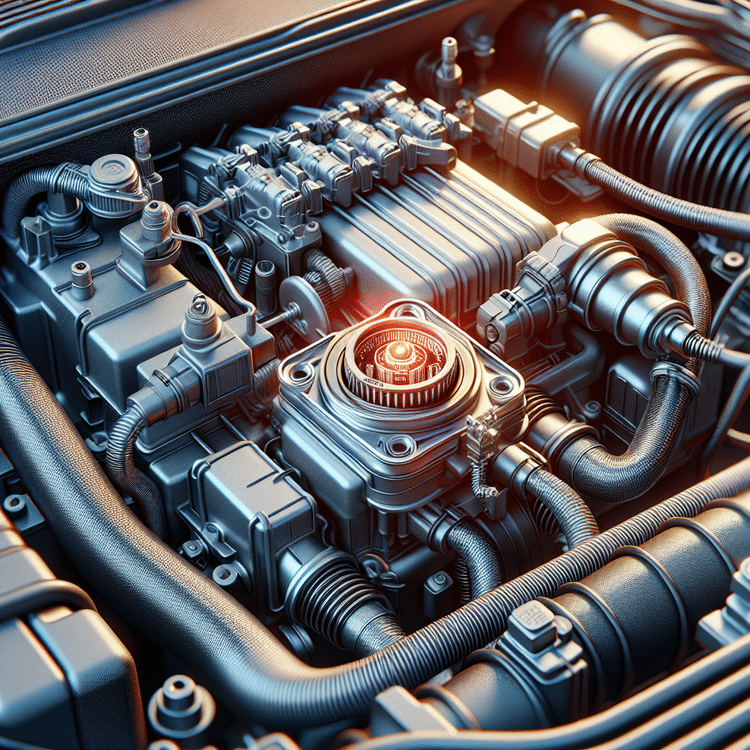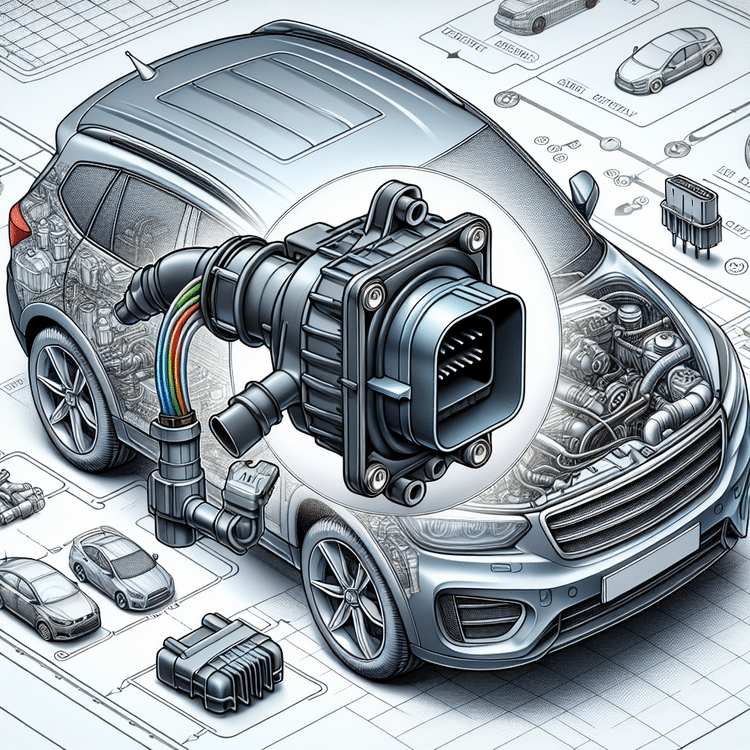Mass Air Flow Sensor Replacement Cost Guide
Table of Content
- Introduction to Mass Air Flow Sensors
- Signs and Symptoms of a Failing Mass Air Flow Sensor
- Understanding the Cost of Mass Air Flow Sensor Replacement
- How to Replace a Mass Air Flow Sensor
- DIY Mass Air Flow Sensor Replacement
- Testing the Mass Air Flow Sensor
- Mass Air Flow Sensor Alternatives
- Locating the Mass Air Flow Sensor in Your Car
- Cost of Car Sensor Replacement Compared to MAF Sensor
- Conclusion and Recommendations
Introduction to Mass Air Flow Sensors

The mass air flow (MAF) sensor is a critical component of your vehicle’s engine management system. It measures the amount of air entering the engine, allowing the engine control unit (ECU) to optimize fuel delivery and maintain efficient combustion. A malfunctioning MAF sensor can lead to decreased fuel efficiency, increased emissions, and poor engine performance, making it essential for vehicle owners to understand its function and associated costs.
When considering maintenance and repairs, recognizing the mass air flow sensor replacement cost is crucial. This cost can vary significantly depending on the vehicle make and model, the location of the repair, and whether you choose to do it yourself or hire a professional mechanic. On average, replacement costs can range from $200 to $600, encompassing parts and labor. For detailed guidance on vehicle sensor replacements, refer to our Replacing Your Vehicle Speed Sensor: A Step-by-Step Guide.
Understanding the cost of mass air flow sensor replacement not only helps car owners budget for repairs but also underscores the importance of timely maintenance to prevent more severe engine issues. For further reading about sensor replacements and their implications, check out our Camshaft Position Sensor Replacement Guide – Step by Step.
Signs and Symptoms of a Failing Mass Air Flow Sensor

A failing mass air flow (MAF) sensor can lead to significant performance issues in your vehicle. It’s crucial to recognize its symptoms early to avoid costly repairs and ensure smooth drivability. Here are some common signs of a malfunctioning MAF sensor:
- Check Engine Light: This is often the first indication that something is wrong. The MAF sensor can trigger the check engine light if it fails or produces inconsistent readings.
- Poor Acceleration: If your vehicle struggles to accelerate or feels sluggish, it may be due to improper air-fuel mixture readings from a faulty MAF sensor.
- Engine Misfires: A malfunctioning MAF sensor can cause the engine to misfire as the air-fuel mixture becomes imbalanced.
- Increased Fuel Consumption: If you’re noticing that you’re filling up more frequently without any change in driving habits, a bad MAF sensor could be leading to inefficient fuel use.
- Stalling: In severe cases, a failing MAF sensor may cause your engine to stall unexpectedly, affecting vehicle control and safety.
Diagnosing these symptoms swiftly can save you time and money. For a deeper understanding of your vehicle’s performance issues, you may want to check out our article on P2015 Intake Manifold Error Code: Causes, Fixes, & Prevention or learn more about AHI Module Issues: Understanding DTC P24F700.
Understanding the Cost of Mass Air Flow Sensor Replacement

The cost of mass air flow (MAF) sensor replacement can vary significantly based on several factors. Typically, the overall replacement cost includes both the price of the part and labor fees. On average, let’s break down the costs:
- Parts Cost: The price for a new mass air flow sensor can range from $100 to $300, depending on the brand and model of the vehicle.
- Labor Cost: Labor costs can fluctuate between $50 and $150 per hour, with most shops spending about 1-2 hours for this type of service, leading to an additional $50 to $300 for labor.
- Total Replacement Cost: Thus, the total cost for replacing a mass air flow sensor can range anywhere from $150 to $600.
Several factors can influence these costs:
- Vehicle Make/Model: Luxury vehicles or those with complex systems may cost more.
- Geographic Location: Rates in urban areas tend to be higher compared to rural regions.
- Mechanic vs. Dealership: Dealerships often charge more than independent mechanics, with a price difference of 10-20%.
For instance, visiting a trusted local mechanic might result in lower costs compared to dealership services, which might include additional fees. To learn more about related services, consider reading about replacing your vehicle speed sensor and how it may be similar in cost and approach.
How to Replace a Mass Air Flow Sensor

Replacing a mass air flow (MAF) sensor is a straightforward process. Here’s a step-by-step guide to help you complete the DIY mass air flow sensor replacement.
Tools and Materials Needed
- Socket wrench set
- Flathead screwdriver
- New mass air flow sensor
- Wire brush or cleaning cloth
- Safety gloves
- Protective eyewear
Step-by-Step Guide
- Safety First: Before starting, ensure the vehicle is off and the keys are removed from the ignition to avoid any accidental starts.
- Locate the MAF Sensor: Typically found between the air filter box and the throttle body. Refer to your vehicle’s service manual for the exact location.
- Disconnect the Sensor: Gently disconnect the electrical connector by pressing the tab and pulling it off.
- Remove the Sensor: Use a socket wrench to remove the screws or bolts holding the MAF sensor in place, then carefully pull it out.
- Clean the Area: Use a wire brush or cleaning cloth to make sure no debris is left in the air intake.
- Install the New Sensor: Position the new MAF sensor and secure it with the screws or bolts. Reconnect the electrical connector.
- Test the Installation: Start the vehicle and check for any warning lights on the dashboard. Ensure that the engine runs smoothly.
For more detailed instructions, you might find this guide on replacing your vehicle speed sensor helpful.
DIY Mass Air Flow Sensor Replacement

Replacing a mass air flow (MAF) sensor can be both challenging and costly if performed by a mechanic. However, opting for a DIY mass air flow sensor replacement offers several advantages, including significant cost savings and the satisfaction of handling your own vehicle repairs.
Here’s a simple step-by-step guide to help you replace your MAF sensor:
- Gather Your Tools: You will need a ratchet set, a flathead screwdriver, and a new mass air flow sensor. Check the specifications for your specific vehicle model.
- Locate the MAF Sensor: The MAF sensor is typically located between the air filter and the intake manifold. Consult your vehicle’s manual for precise location details.
- Disconnect the Battery: Safety first! Disconnect the negative terminal of the battery to prevent any electrical issues while working on the sensor.
- Remove the Old Sensor: Disconnect the wiring harness attached to the MAF sensor. Use a ratchet to loosen the bolts and carefully remove the sensor from its housing.
- Install the New Sensor: Place the new MAF sensor in the same position as the old one and secure it with bolts. Reconnect the wiring harness.
- Reconnect the Battery: Once everything is secured, reconnect the negative terminal of your battery.
- Test Drive: Start the vehicle and take it for a test drive. Monitor for any error codes or dashboard warnings.
By performing a DIY replacement, you could save on costs typically associated with labor fees, as shop prices can range from $150 to $300 for this service.
Testing the Mass Air Flow Sensor

Before considering the replacement of your mass air flow (MAF) sensor, it’s crucial to conduct a thorough test to ascertain whether it’s indeed faulty. Testing the MAF sensor not only provides insight into its operational status but may also save you the unnecessary costs of replacement. Common symptoms of a malfunctioning MAF sensor include poor fuel economy, rough idling, and sluggish acceleration.
There are various methods for testing the MAF sensor:
- Visual Inspection: Check for any damage or loose connections.
- Multimeter Test: Use a multimeter to check the voltage output of the MAF sensor while the engine is running.
- OBD-II Scanner: Connect a scanner to read any error codes that may indicate MAF sensor issues.
The cost of testing your MAF sensor can vary significantly. DIY testing can be very economical if you have the right tools, whereas seeking professional assistance may range from $50 to $150 depending on the service provider. If you’re uncertain about your testing abilities, it’s wise to consult a mechanic to avoid misdiagnosis.
For more insights on diagnostic procedures, check out our article on Camshaft Position Sensor Testing: Tools, Methods, and Common Pitfalls. You can also learn about P2015 Intake Manifold Error Code: Causes, Fixes, & Prevention which may relate to MAF sensor symptoms.
Mass Air Flow Sensor Alternatives

When facing issues with a mass air flow (MAF) sensor, outright replacement may not always be the only solution. Various alternatives exist that can minimize costs while addressing performance issues.
- Repairs: Sometimes, cleaning the MAF sensor can restore its functionality. This involves using a specialized cleaner designed for sensitive electronics. Regular maintenance and cleaning can prevent build-up of dirt and debris, prolonging the sensor’s life.
- Aftermarket Parts: Consider using aftermarket MAF sensors. These can often be less expensive than OEM options and can provide similar performance. However, it’s crucial to research their reliability and compatibility with your vehicle model.
- Used Parts: In some cases, buying a used MAF sensor can be a cost-effective solution. Ensure that the part is in good condition and check for warranties or return policies to mitigate risks.
While these alternatives can be viable, they may not always provide the same performance as a new, OEM MAF sensor. Poor performance can lead to reduced fuel efficiency and increased emissions, emphasizing the importance of a reliable sensor.
Locating the Mass Air Flow Sensor in Your Car

Finding the mass air flow sensor (MAF) in your car can vary depending on the make and model. However, there are common locations where you can typically find the MAF sensor:
- Front of the air filter box: In many vehicles, the MAF sensor is located right after the air filter and before the throttle body. Check for a small cylindrical component attached to the air intake duct.
- Near the throttle body: Some models have the MAF sensor positioned closer to the throttle body. Look along the intake manifold in front of the throttle plate.
- Underneath the engine cover: In certain cars, the MAF sensor may be hidden under the engine cover. Carefully remove any covers to access it.
For specific vehicle guidance, refer to the Camshaft Position Sensor Replacement Guide, which also discusses components near the engine that may assist in locating the MAF sensor.
Cost of Car Sensor Replacement Compared to MAF Sensor

Replacing various car sensors can significantly impact your vehicle maintenance budget. The cost of car sensor replacement varies widely depending on the type of sensor and the make and model of your vehicle. For example, while a mass air flow (MAF) sensor typically costs between $200 to $500 to replace, other common sensors have their own price ranges:
- Oxygen Sensors: Replacement costs can range from $100 to $300.
- Coolant Temperature Sensors: These generally fall between $50 and $150.
- Throttle Position Sensors: Often priced around $100 to $250.
When budgeting for sensor replacements, it’s essential to consider that multiple sensors may need replacing simultaneously, especially as your vehicle ages. This can lead to compounded expenses. For instance, if your car is showing signs of a faulty MAF sensor, it’s wise to have other sensors checked at the same time to avoid repeated labor costs.
Conclusion and Recommendations

In summary, the cost of mass air flow sensor replacement varies depending on the vehicle make, model, and geographic location, with typical expenses ranging from $150 to $600. Factors such as labor costs and whether you opt for original equipment manufacturer (OEM) or aftermarket parts can significantly influence the total cost.
When considering a mass air flow sensor replacement, car owners should evaluate their options carefully. Consulting with a professional mechanic is recommended to ensure proper diagnosis and installation. Alternatively, those with mechanical skills may consider handling the replacement as a DIY project to save on labor costs.
To facilitate the process, it’s essential to source quality components. I recommend exploring products available at Techroute66, notably the Launch X431 Tesla Airbag Repair SRS Crash Data Reset Designated Connector, which is specifically designed for vehicle repairs.
